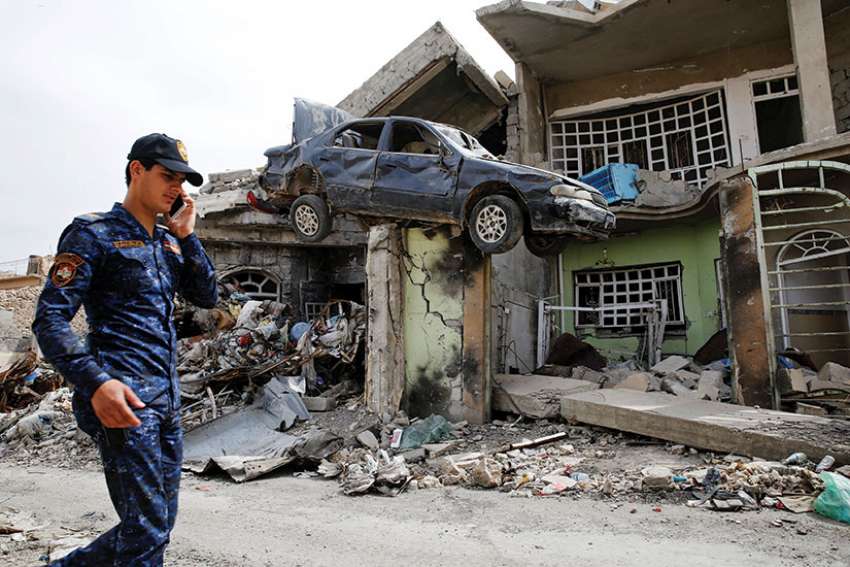“People do want to go back,” Aid to the Church in Need general secretary Philipp Ozores told The Catholic Register.
The war is a daily reality for citizens. On May 28, Iraqi jets screamed low across the sky above Mosul, dropping payloads that killed 29 ISIS fighters, destroying a booby-trapped container, blowing up a vehicle with a gun mounted on it plus two other vehicles, according to the Iraqi army. Local sources on the ground say 20 civilians were killed and at least 25 others injured in airstrikes launched by the U.S.-led international coalition.
Aid to the Church in Need estimates there are 250,000 Christians still in Iraq, almost all of them living as virtual refugees scattered about the country. About 130,000 have found temporary refuge in the autonomous Kurdish territory north of Mosul. They are all that remains of an Iraqi Christian population that before 2003 was as high as 1.4 million.
“Some of them have stayed because they have no alternative. But most of them are staying in Erbil (capital of Iraqi Kurdistan) because they still believe they have a chance to go back to their villages. They wish to go back.”
Aid to the Church in Need has launched plans to renovate and restore nearly 13,000 Christian houses damaged during the Islamic State occupation of the Nineveh plains. The German-based charity is working equally with the Syriac Orthodox, Syriac Catholic and Chaldean bishops.
In a recent visit to Iraq to inspect the damage and meet with families planning their return, Ozores found the challenges for re-establishing Christian villages varied greatly.
“You have one village where I couldn’t go because it’s just on the outskirts of Mosul — it’s Teleskef in the north of Mosul,” he said. “You can still hear the bombs of Mosul from there. It’s still a war zone.”
On the other hand, villages such as Alqosh, further north, were never occupied by ISIS.
“A lot of families actually are returning already,” said Ozores. “This is a village where it makes absolute sense to support the reconstruction, to support the families to go back.”
In between these two extremes is Qaraqosh, called Bagdedhi in Aramean. A major Christian town that was once home to 50,000, Qaraqosh was hit hard by fighting and occupied by ISIS. It is now safely behind the lines established by Iraqi government forces and allied militias, but that doesn’t mean returning will be easy.
Many of the Sunni Muslims who remained in the villages greeted ISIS as liberators, helped ISIS fighters by identifying Christian households and in some cases looted refrigerators, televisions and other items from Christian homes.
“Security in villages with other minorities is only a problem in some villages, where we need to take care of it,” said Ozores.
Christian villagers told Ozores they have to reclaim their houses and their farms now, before their property becomes permanently occupied by former neighbours.
“They said, if we don’t come back to these houses now then we definitely give them up. Then, any chance is lost to ever return.”
Rebuilding and restoring Christian Iraq might seem like an unlikely project, but we have to learn to see it in terms of Iraqi history, according to Ozores.
“To Western ears this sounds very risky. But don’t forget that these people have been living in these areas, contested by various powers, for hundreds of years. This is not a new situation,” he said. “We think, as an organization, there is a realistic chance now. Many of the risks have gone which were previously there.”


